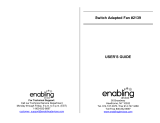
Introduction
Important information
8
* Option/accessory, for more information, see Introduction.
Bulleted lists
A bulleted list is used when there is a list of
points in the owner's manual.
Example:
•
Coolant
•
Engine oil
To be continued
`
This symbol is located furthest down to the
right when a section continues on the following
page.
Recording data
Your vehicle contains a number of computers
whose function is to continuously check and
monitor the vehicle's operation and function-
ality. Some of the computers can record infor-
mation during normal driving if they detect an
error. In addition, information is recorded in the
event of a collision or incident. Parts of the
recorded information are required so that tech-
nicians can diagnose and rectify faults in the
vehicle during servicing and maintenance and
so that Volvo can fulfil legal requirements and
other regulations. In addition to this, the infor-
mation is used for research purposes by Volvo
in order to continually develop quality and
safety, as the information can contribute to a
better understanding of the factors that cause
accidents and injuries. The information
includes details of the status and functionality
of various systems and modules in the vehicle
with regard to engine, throttle, steering and
brake systems, amongst other things. This
information may include details regarding the
way the driver drives the vehicle, such as vehi-
cle speed, brake and accelerator pedal use,
steering wheel movement and whether or not
the driver and passengers have used their
seatbelts. For the reasons given this informa-
tion may be stored in the vehicle's computers
for a certain length of time, but also as a result
of a collision or incident. This information may
be stored by Volvo as long as it can help to
further develop and further enhance safety and
quality and as long as there are legal require-
ments and other regulations that Volvo needs
to consider.
Volvo will not contribute to the above-descri-
bed information being disclosed to third parties
without the vehicle owner's consent. However,
due to national legislation and regulations
Volvo may be required to disclose such infor-
mation to authorities such as police authorities,
or others who may assert a legal right to have
access to it.
To be able to read and interpret the information
recorded by the computers in the vehicle
requires special technical equipment that
Volvo, and workshops that have entered into
agreements with Volvo, have access to. Volvo
is responsible that the information, which is
transferred to Volvo during servicing and main-
tenance, is stored and handled in a secure
manner and that the handling complies with
applicable legal requirements. For further infor-
mation - contact a Volvo dealer.
Accessories and extra equipment
The incorrect connection and installation of
accessories can negatively affect the car's
electrical system. Certain accessories only
function when their associated software is
installed in the car's computer system. Volvo
therefore recommends that you always con-
tact an authorised Volvo workshop before
installing accessories which are connected to
or affect the electrical system.
Change of ownership for cars with
Volvo On Call*
Volvo On Call is a supplemental service that
consists of safety, security and comfort serv-
ices. If the car has Volvo On Call and there is a
change of owner, it is very important that these
services are discontinued so that the former
owner cannot access the services in the car.
Contact the call centre by pressing the ON
CALL button in the car or contact an author-
ised Volvo workshop. See also "Changing the
security code" in the owner's manual for Volvo
On Call.






















